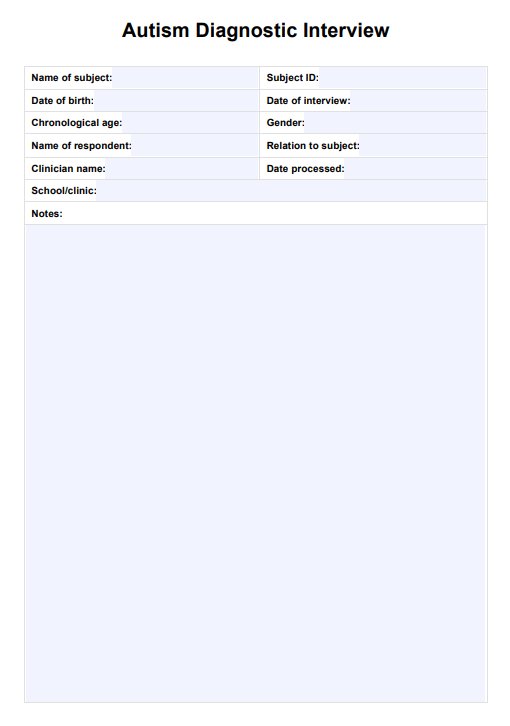The ADI-R aims to provide a comprehensive assessment tool for diagnosing autism in individuals by collecting detailed information on their developmental history and current behavior through structured interviews with caregivers.

Autism Diagnosis Interview (ADI)
Explore the benefits and use of the Autism Diagnosis Interview-Revised (ADI-R) for accurate autism assessment and management.
Use Template
Autism Diagnosis Interview (ADI) Template
Commonly asked questions
The ADI-R typically takes between 1.5 to 2.5 hours to administer, depending on the complexity of the individual's behaviors and the thoroughness of the caregiver's responses.
The ADI-R consists of approximately 93 questions covering various aspects of behavior and development related to autism spectrum disorders.
EHR and practice management software
Get started for free
*No credit card required
Free
$0/usd
Unlimited clients
Telehealth
1GB of storage
Client portal text
Automated billing and online payments











